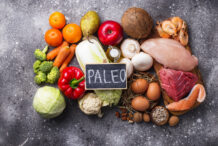We don’t only appreciate fried foods like French fries, chips, and tempura for their flavor. We also love the crispness. But it seems there’s a price to pay if you indulge more than occasionally. Research suggests that if you eat fried foods frequently, you’re more likely to end up with heart disease, diabetes, obesity, and other chronic conditions than those who largely abstain.
In one study published in the journal Heart in 2021, epidemiologists in China pooled the results of 17 studies that included more than 500,000 people and found that those who ate the most fried food had a 28 percent higher risk of suffering a major cardiovascular event than those who ate the least—with risk rising 3 percent for each additional 4-ounce serving of fried food consumed. “Fried Food a Big Factor in Heart Disease, Stroke,” one headline read when the study came out.
Researchers at Harvard have shown similarly concerning results. When they examined data from more than 110,000 people in the Nurses’ Health Study and the Health Professionals Follow-Up Study, they found that those who reported consuming fried foods at least once a week were more likely to develop type 2 diabetes and coronary artery disease than people who ate fried foods less often.
It certainly makes intuitive sense. Frying a food adds a lot of calories to it. For one, oil is fat, which has more than twice as many calories for its weight as do carbohydrates or protein. Moreover, the fat in the cooking oil replaces water in the food so that, for instance, 3.5 ounces of boiled potatoes have 65 calories, while the same serving size of fried potatoes has 240. Frying eggplant increases the calories even more because, like a sponge, it absorbs more oil: 3.5 ounces of uncooked eggplant has 25 calories; fried, 466. Thus, the more that fried foods are a part of your diet, the more calories you may be taking in on a regular basis, which increases the risk of becoming overweight, which in turn increases the risk for heart disease and diabetes.
But is it just the extra calories, or are there other properties of fried foods that could be harmful to health?
Acrylamide. This chemical forms mostly in plant foods like potatoes and grains when they are cooked at high temperatures, including frying. Based on studies where animals were fed very large doses of acrylamide and developed cancer, the Joint Food and Agriculture Organization/World Health Organization Expert Committee on Food Additives concluded that acrylamide is a human health concern (but would also like to see more studies).
According to the FDA, it’s not clear what risk acrylamide poses to people. In the absence of data, the agency says that people should not stop eating fried foods just to avoid acrylamide—that wouldn’t be possible because the chemical is also in roasted and baked foods. Rather, it says, the aim is to focus on a healthy dietary pattern overall.
Trans fatty acids. Cooking oil undergoes oxidation when subjected to excessive heat, and there have been thoughts that this creates trans fatty acids (trans fats), which increase LDL (“bad”) cholesterol and decrease HDL (“good”) cholesterol. But the amount of trans fatty acids formed is trivial at most, several studies have demonstrated. Some oils, like olive oil, are particularly resistant to oxidation during frying. The real problem occurred when partially hydrogenated oils—which are more stable but are a significant source of trans fats—were used in commercial fry operations, but those oils have in effect been eliminated from the U.S. food supply in recent years after the FDA essentially banned manufacturers from using them.
Other breakdown products. Of more concern is that when cooking oil is heated to a high temperature, other breakdown products are created, including toxic aldehydes. This danger increases when oils are reused over long periods, especially if food debris remains in the cooking oil. High-heat breakdown products like these, when consumed in high enough amounts, can potentially be carcinogenic. In addition, when animal foods are cooked in overheated oils, the cholesterol in the food can also become oxidized—and oxidized cholesterol is even more harmful to arteries when consumed.
The operative phrase here is “in high enough amounts,” which goes back to the FDA’s advice to focus on your entire dietary pattern. Are you eating fried foods regularly, or just on occasion? And what else are you including (or not including) in your diet? In effect, how “bad” fried foods are for you likely depends on your overall diet and other factors outside the frying pan.
In the U.S., anywhere from 25 to 36 percent of the population consumes fried foods every day—usually from fast food restaurants, where vegetables, whole grains, and other foods that make up a healthy diet are not front and center on menus. This means that, for many people, fried foods play an outsized role in their daily meal plan.
And in the Harvard research described above, eating fried foods away from home was more strongly associated with the development of type 2 diabetes than preparing such foods in one’s own kitchen. “Portion sizes are often larger and sodium contents higher in restaurant meals than in meals eaten at home,” the investigators pointed out. The Harvard investigators also determined that people who tended to eat more fried food consumed fewer vegetables, fruits, whole grains, and fish.
Frequency matters, too. Participants in the Harvard study who were found to be at greatest risk for diabetes and heart disease were eating fried foods at least seven times a week. Many others were eating fried dishes four to six times a week. The risks went up much less in those consuming fried foods one to three times a week, especially after the researchers controlled for other factors that contribute to diabetes and heart disease, including blood pressure, cholesterol, and body weight. And had the researchers pinned down results for people eating fried foods just once or twice a week, the risk might have very well been lower still. In the China study, the risks were similarly lower in those who ate fried food less often.
BOTTOM LINE: If you enjoy fried food, you don’t have to say “never” to getting that crunchy, flavorful fix. But it’s best to keep it as an occasional indulgence—not more than once a week or once every couple of weeks. For tips on how to play it safer when eating fried foods, see the tips in the box below.
- Watch portion sizes of fried foods, especially in restaurants, which are notorious for supersizing (often to two to three times the recommended serving size). Keep in mind that menu terms such as “battered,” “breaded,” “crispy,” and “tempura” mean “fried.” If in doubt, ask your waitperson how a food is prepared.
- Avoid reused cooking oil. Some restaurants may reuse their cooking oil for frying many times, which increases potentially harmful breakdown chemicals in it. At home, use fresh oil each time you fry.
- Use more healthful “vegetable” oils for frying like olive, canola, peanut, or high-oleic sunflower and safflower oils, rather than butter, lard, or other animal fats, which have a higher percentage of saturated fats; saturated fats raise blood cholesterol. These particular vegetable oils are also more stable when heated and form fewer degradation products than polyunsaturated oils like corn and soybean oil. What about coconut oil? If you are particularly partial to the flavor it imparts, it’s okay to use this tropical oil for frying—but consider using refined coconut oil for its higher smoke point and limit how much and how often, since it is high in saturated fat and has been found to raise blood cholesterol levels.
- Heat the oil before adding the food to the pan; the food will cook quicker that way and absorb less oil in the process. Less acrylamide will also form, especially if you remove any food debris in the hot oil. But be careful not to heat oil past its smoke point—the smoke produced means the oil is breaking down (and also indicates a fire hazard).
- Fry in as little oil as you can to get the desired texture and flavor. A little can go a long way—the oil doesn’t need to be dripping off the food. After frying, use paper towels to blot out any excess oil.
- Consider pan-frying over deep-frying. Though deep-frying can give you crispier food, it also increases the calories, especially if the food is breaded (the breading absorbs more oil)—and boosts acrylamide levels. An air fryer is another option: Your food won’t taste quite like typical fried food, but you’ll still get a lot of the crispy texture.
- Turn on your stove’s range hood or other exhaust fan, and open windows, if possible, when frying. Ventilation will help remove other potentially hazardous compounds—heterocyclic amines (HCAs) and polycyclic aromatic hydrocarbons (PAHs)—present in the fumes created when foods are cooked at high heat.





